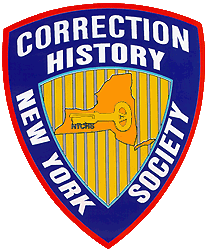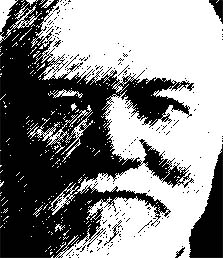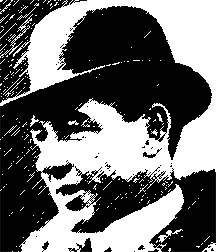III:
Early Legislative Efforts
at Prison Reform
Throughout its history the Association has played an important role in the legislative debate on prison reform and prisoners' fundamental civil rights. . . .
Legislative Reforms of 1847
In 1847 a new constitution was adopted by New York State. Its most significant prison reform provision was the abolition of whippings as a form of punishment. The new constitution necessitated the wholesale revision of numerous state laws that had been enacted through the "entire history" of the "commonwealth." The Association seized the initiative and . . . proposed a single, consolidated act to clarify and introduce enhancements to the new law.
The result was a massive new law, thirty-seven pages long, entitled "AN ACT for the better regulation of the county and state prisons of the state, and consolidating and amending the existing laws in relation thereto." It was passed by the Legislature on December 14, 1847, and included no fewer than forty-three provisions for the improvement of prison conditions and administration inserted at the suggestion of the Association. . . .
The reforms based on the Association's initiative included
- providing a Bible for each cell and religious worship on Sundays,
- requiring the inspectors to visit each state prison at least four times each year,
- establishing a system of books and records for prison property,
- procurement of goods and services, and prisoner information;
- forbidding inspectors from appointing relatives to office or from engaging in self-dealing in supply contracts;
- requiring the warden to keep a daily journal of all punishments inflicted and every complaint by inmates about the quality and quantity of food, clothing, or unjust treatment;
|
Religious intonations were not uncommon in that period when the discussion turned to issues of prison reform.
William H. Seward, then ex-governor of New York, once wrote to the Association:
"Our holy religion makes no distinction among the prisoners whom it enjoins us to visit. Your experience has taught you that such ministrations bless those who render them even more than those who receive them, and you are sure of ultimate vindication.... Christianity is a fraud, if the charity which believeth all things, hopeth all things, endureth all things, and withal vaunteth not itself, cannot open the gates of heaven."
Third Annual Report -- 1846. Part 1, p. 18.
Report of the Executive Committee, p. 26.
|
- requiring the chaplain to visit inmates in their cells, and to devote one hour each week and the afternoon of each Sunday to religious and moral instruction;
- requiring the chaplain to manage the library and ensure that "no improper books are introduced into the cells of convicts";
- requiring the chaplain to visit daily those inmates who are sick in the hospital;
- requiring the appointment of instructors in English education to those inmates who might benefit from it;
- and requiring the physician to examine daily "the quality and state of the provisions delivered to the prisoners" and to prescribe the diet of sick convicts.
At the Association's suggestion, the new law also eliminated the abusive practice of permitting any outsider to visit a prison upon payment of an admission fee to the warden. Not only was this a source of income to the keepers, it was also a form of perverse amusement for some local citizens. . . .
The new law was a first step toward the establishment of a prisoner's right to privacy, although it also codified provisions that restricted that right by empowering the warden to approve visitors and review incoming and outgoing letters. Today this is still an active area of contention and restriction. Recent decisions by the United States Supreme Court have addressed, but continue to restrict, a prisoner's right to associate with visitors (family and the media) and to communicate unhindered through the mail or by granting interviews.
The Politics of Establishing a Workhouse
A second major legislative initiative undertaken by the Association in its early history was the fulfillment of its original mandate to establish and manage a workhouse for vagrants and
other minor felons -- a forerunner of today's alternative treatment
reforms. These were persons imprisoned in city jails, usually on
Blackwells Island, as punishment for public intoxication, disorderly conduct, street fighting, and petty larceny.
The inmates committed to Blackwells Island also included an inordinate number of prostitutes. Apparently it was common practice
|
among the keepers of the houses of prostitution . . . to look to Blackwell's Island as a place of refuge and last resort for the inmates of their establishments, in case of sickness and disease. Whenever any of their boarders, (as so they are termed) become diseased, or unfit to do their part towards supporting the house, they are made to turn out into the
streets after the night watch is set, and give themselves up as
vagrants, when they are lodged in the watch-house, and next
morning sent to Blackwell's Island for thirty or sixty days. Second Annual Report, 1845 |
The Association felt that by helping persons who were not hardened criminals to find gainful employment under administrative
supervision, those persons would have a better chance of returning to a productive role in society. The alternative, which was pervasive in the system at that time, was to commingle recidivist career criminals with minor felons. In fact, the Association believed that "probably no prison in the world so greatly needs entire reform in its plan and discipline, as our county penitentiary on Blackwell's Island. It has too long been famous, not only as being one of the largest, but one of the worst governed prisons in
Christendom."
Among Association members
circa 1874-1894: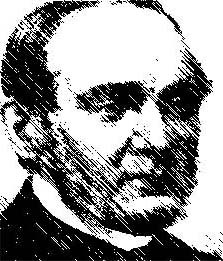
William B. Astor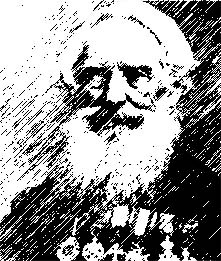
Samuel F. B. Morse
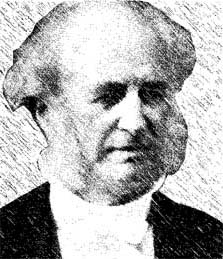
Cornelius Vanderbilt
|
The manner in which legislation was enacted to establish a
workhouse for petty criminals on Blackwells Island is an early but
telling example of judicial activism in the face of legislative and
political inertia toward the cries for prison reform. . . .
The episode of the workhouse on Blackwells Island began in
December 1848, when Judge John Edmonds, who helped found
the Association, impaneled a grand jury to investigate, among
other things, the stringent release policies of the city prisons. At
the time
|
persons [were] frequently detained in prison after the
expiration of their terms of imprisonment; sometimes because
they are forgotten, sometimes because the prisoners desire to
remain, and sometimes because the officers think it for the interest of the ... [government] that they should be detained. It is indeed a general practice at the Penitentiary, never to let a prisoner out until he asks to be discharged. Second Annual Report, 1845 |
Given that attitude, it is no surprise that the grand jury discovered "no less than 750 inmates of the penitentiary at that moment legally entitled to their liberty!" Judge Edmonds wrote to the mayor, "stating that it was his duty forthwith to discharge all these persons; and suggesting that, as it was mid-winter, and many of them were poor and infirm, the city authorities should make some provisions for their support."
The mayor was obviously not pleased to learn of the impending "invasion of the city by nearly a thousand desperadoes. . . " As a result of the negotiations that followed, the Legislature passed a bill known as the Ten Governors Act, which removed the city's prisons and almshouse from "the reach of partisan politics," placing their administration in the hands of "gentlemen ... fully imbued with the principles of reform."
While it took the Association several years to secure a new building for the workhouse, once launched the concept was quickly judged a success. The 250 convicts released to the workhouse earned nearly $100,000 a year, more than the 800 convicts in the entire penitentiary on Blackwells Island.
The objective of the workhouse was to pay "the expenses of its support, on the one hand, while [acting] as a deterring agent on the other, and keep those drones away from our charities and our prisons, who have habitually lived upon the city for years, because they were too lazy to work."

